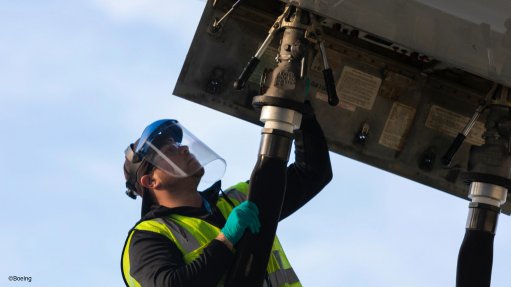Cell C achieves improved H1 performance
Mobile operator Cell C has reported improvements in profitability and operational efficiencies during the six months to June 30, 2021, as steady progress is made in the company’s phased turnaround.
With the implementation of a new operating model and network strategy, along with new customers drawn through products and services innovation, Cell C posted R148-million profit before tax for the first half of 2021, a turnaround on the R7.6-billion loss reported in the prior corresponding period.
The improvement is attributed to the significant impairment of network assets in the previous financial year and operational expenditure savings during the current financial year, the latter of which decreased 25% to R1.7-billion year-on-year owing to a reduction in network expenses and administration costs, said Cell C CEO Douglas Craigie Stevenson.
Cell C’s gross margin declined by 15% and overall direct expenses increased slightly to R3.6-billion during the six months to June 30, 2021.
Earnings before interest and taxes increased to R736-million in the first half of 2021 from a loss of R5.3-billion in the first half of 2020.
Total revenue for the six-month period under review decreased 5% to R6.6-billion, with the largest part of the revenue contribution from Cell C’s prepaid base at R3-billion and a reduction in its postpaid base by 25% to R563-million.
“The contract and broadband revenue decrease is in line with Cell C’s approach to optimise its customer base,” explained Craigie Stevenson.
In line with this, Cell C had entered into a commercial agreement with Comm Equipment Company and Vodacom to improve the overall operational efficiency and returns of managing its 1.6-million postpaid and contract broadband subscriber base.
“Underlying this decision was the opportunity to move away from heavily subsidised devices, which Cell C could not get a return on owing to its network shortfall,” he said, noting that the company will offer products based on customer need rather than driven by the device subsidy.
“Our financial performance has improved, and we are making good progress on the three-year transition to a virtual radio access network, the implementation of our new business model and the introduction of new products to market,” continued Craigie Stevenson.
The company successfully migrated 40% of the network – with four provinces, namely the Eastern Cape, Free State, Northern Cape and Limpopo now fully migrated – with access to 7 500 towers of which 95% are fourth-generation/long-term evolution-enabled.
“We will continue to add new sites which will reduce our network deficit. In two years, we will have access to more than 12 500 sites across the country improving the quality and coverage of our network,” he said.
As Cell C focused on more profitable customers, the average revenue per user was sustained at R66 year-on-year.
The total subscriber base expanded to nearly 13-million during the first half of 2021, up from 11.7-million in the first half of 2020, with its prepaid customer base increasing by 15% to 9.6-million.
“These interim results highlight that Cell C is a stronger business, is generating cash and is more competitive in the market. We are championing value and bridging the digital divide by making Internet access affordable for all, while doing what is best for the customer,” added Cell C CFO Zaf Mahomed.
However, despite improvements in the income statement and being on track to return Cell C to profitability, a recapitalisation is needed to address the debt on the balance sheet.
“A recapitalisation is the final pillar in Cell C’s turnaround strategy and will provide momentum to effectively manage the transition, focus on profitable revenue growth and the overall simplification of the cost base, putting Cell C on the path to long-term sustainability,” he concluded.
Comments
Press Office
Announcements
What's On
Subscribe to improve your user experience...
Option 1 (equivalent of R125 a month):
Receive a weekly copy of Creamer Media's Engineering News & Mining Weekly magazine
(print copy for those in South Africa and e-magazine for those outside of South Africa)
Receive daily email newsletters
Access to full search results
Access archive of magazine back copies
Access to Projects in Progress
Access to ONE Research Report of your choice in PDF format
Option 2 (equivalent of R375 a month):
All benefits from Option 1
PLUS
Access to Creamer Media's Research Channel Africa for ALL Research Reports, in PDF format, on various industrial and mining sectors
including Electricity; Water; Energy Transition; Hydrogen; Roads, Rail and Ports; Coal; Gold; Platinum; Battery Metals; etc.
Already a subscriber?
Forgotten your password?
Receive weekly copy of Creamer Media's Engineering News & Mining Weekly magazine (print copy for those in South Africa and e-magazine for those outside of South Africa)
➕
Recieve daily email newsletters
➕
Access to full search results
➕
Access archive of magazine back copies
➕
Access to Projects in Progress
➕
Access to ONE Research Report of your choice in PDF format
RESEARCH CHANNEL AFRICA
R4500 (equivalent of R375 a month)
SUBSCRIBEAll benefits from Option 1
➕
Access to Creamer Media's Research Channel Africa for ALL Research Reports on various industrial and mining sectors, in PDF format, including on:
Electricity
➕
Water
➕
Energy Transition
➕
Hydrogen
➕
Roads, Rail and Ports
➕
Coal
➕
Gold
➕
Platinum
➕
Battery Metals
➕
etc.
Receive all benefits from Option 1 or Option 2 delivered to numerous people at your company
➕
Multiple User names and Passwords for simultaneous log-ins
➕
Intranet integration access to all in your organisation


















